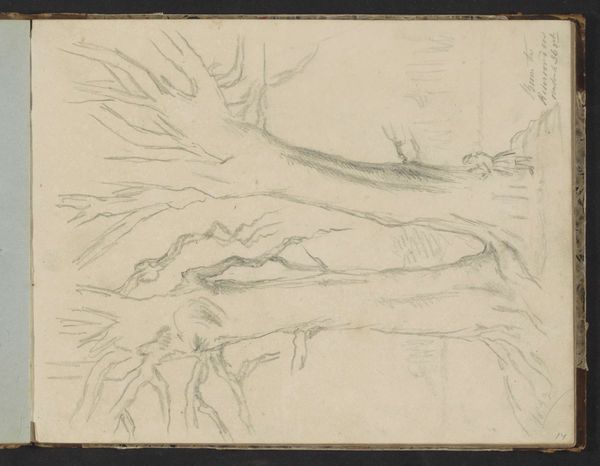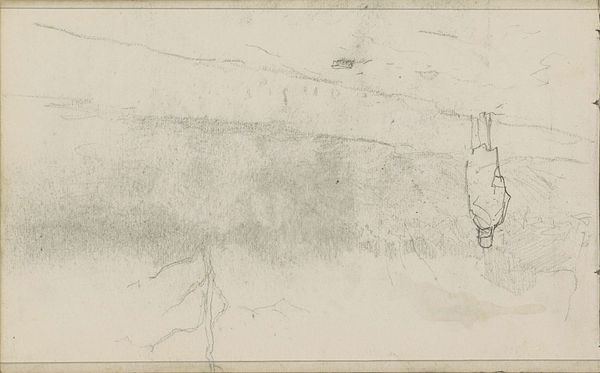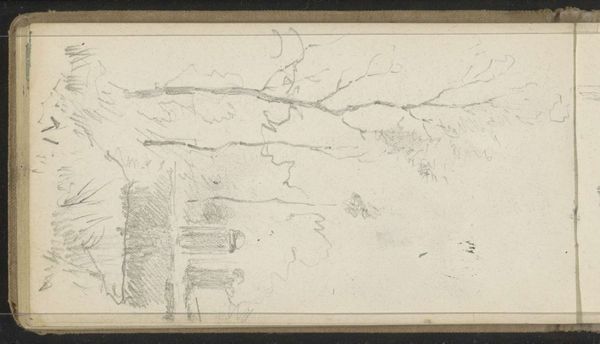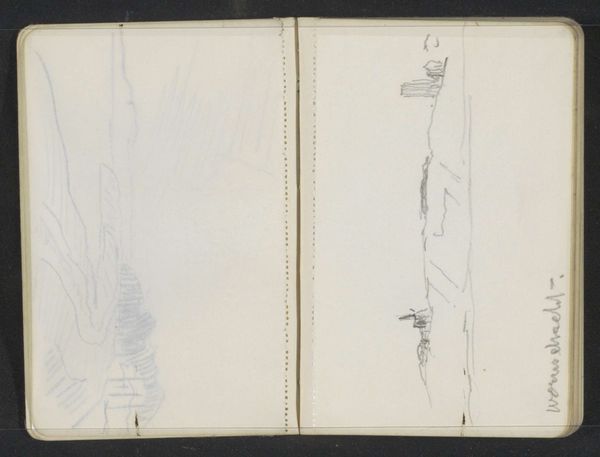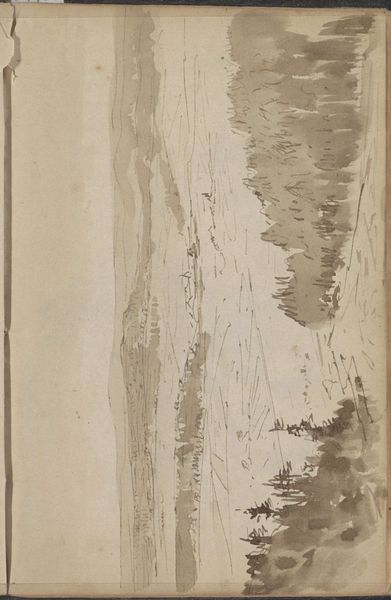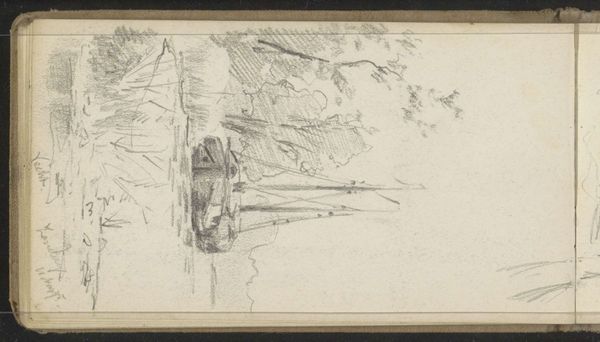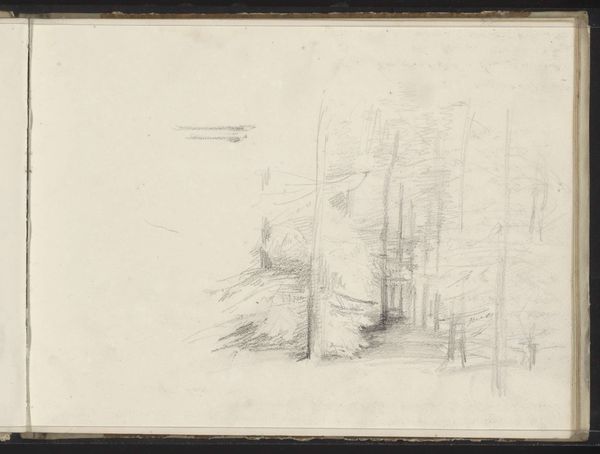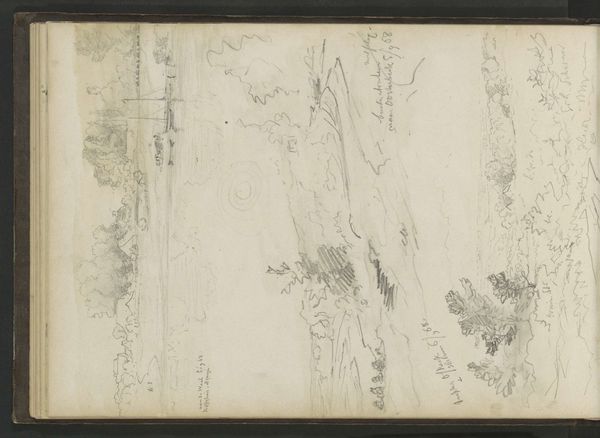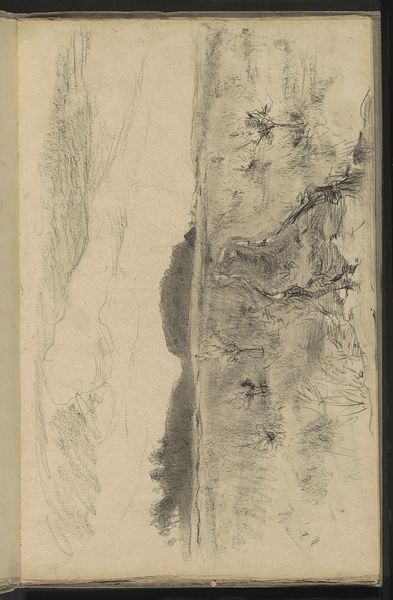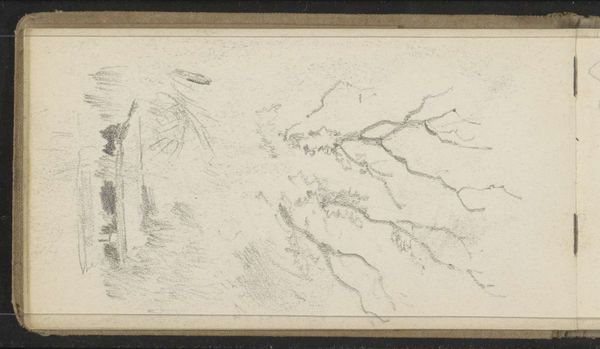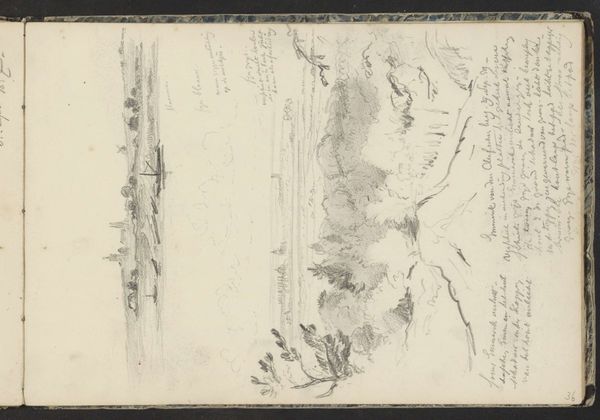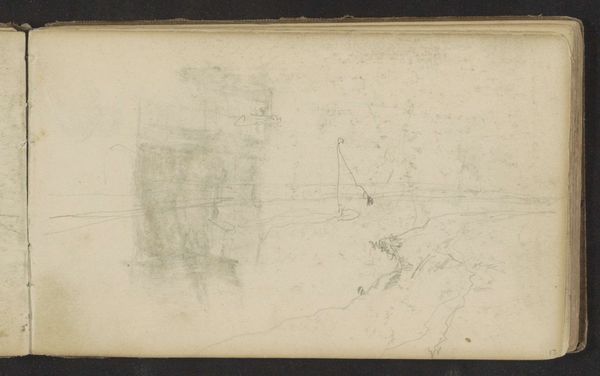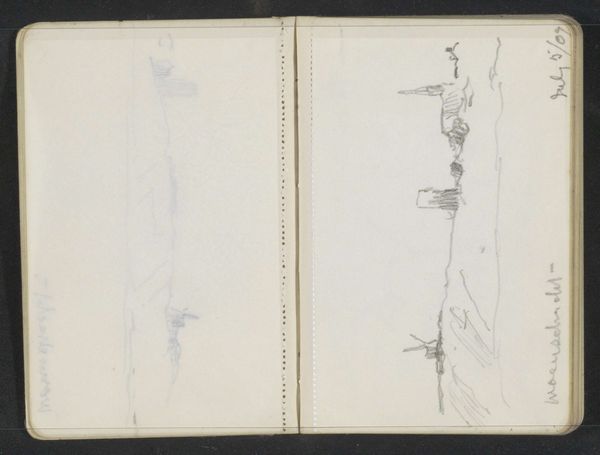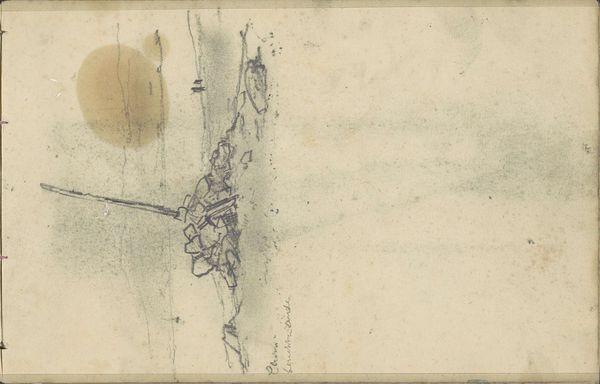
Copyright: Rijks Museum: Open Domain
Curator: What a seemingly quiet scene. The delicate pencil work conveys a sense of serenity and transience. Editor: Indeed. Here we have a pen and pencil drawing titled "Gezicht op Emmerik van het Spijk" created between 1857 and 1859 by Johannes Tavenraat. It's currently held in the collection of the Rijksmuseum. Curator: The medium immediately draws my attention. Paper allows for corrections, changes of mind, a peek into the working process of Tavenraat, as opposed to more considered methods of production such as oils. Editor: I agree. Note the recurrence of architectural motifs, especially the steeple rising modestly in the distance. In older Dutch painting, churches functioned as symbols of community stability and spiritual aspiration, but it is more muted here. It offers a more unassuming image of communal identity and simple faith. Curator: How fascinating. And, tell me, what about the industrial context here? See the subtle penwork sketching fence posts, which hint at new forms of land demarcation. The landscape, formerly defined by agricultural cycles and social uses, is in the process of industrialisation. Editor: Certainly, one can read it that way. I perceive a slightly different tone. Consider the broader stylistic trends that shaped it: romanticism, and its celebration of natural beauty, perhaps as a symbolic retreat from modern life. These scattered trees and the open waterway reflect a broader theme during this period, that landscape offered respite. Curator: It could be a respite bought at a cost. Perhaps Tavenraat is making visible those processes and that consumption which enable us to perceive it as a place of natural retreat, a space untouched. The romantic gaze is never an unmediated one. Editor: You give me much to consider. It would be fascinating to know more about Tavenraat’s personal life and perspective while composing this work. Curator: Exactly! I think this drawing asks us to look beyond the image itself, to interrogate the forces shaping both its creation and reception. Editor: I appreciate the way that seeing it simply as a drawing belies a more material interpretation, a reading into the world as it was at the time. Thanks to your material lens, I'm now more sensitive to its various hidden facets.
Comments
No comments
Be the first to comment and join the conversation on the ultimate creative platform.
